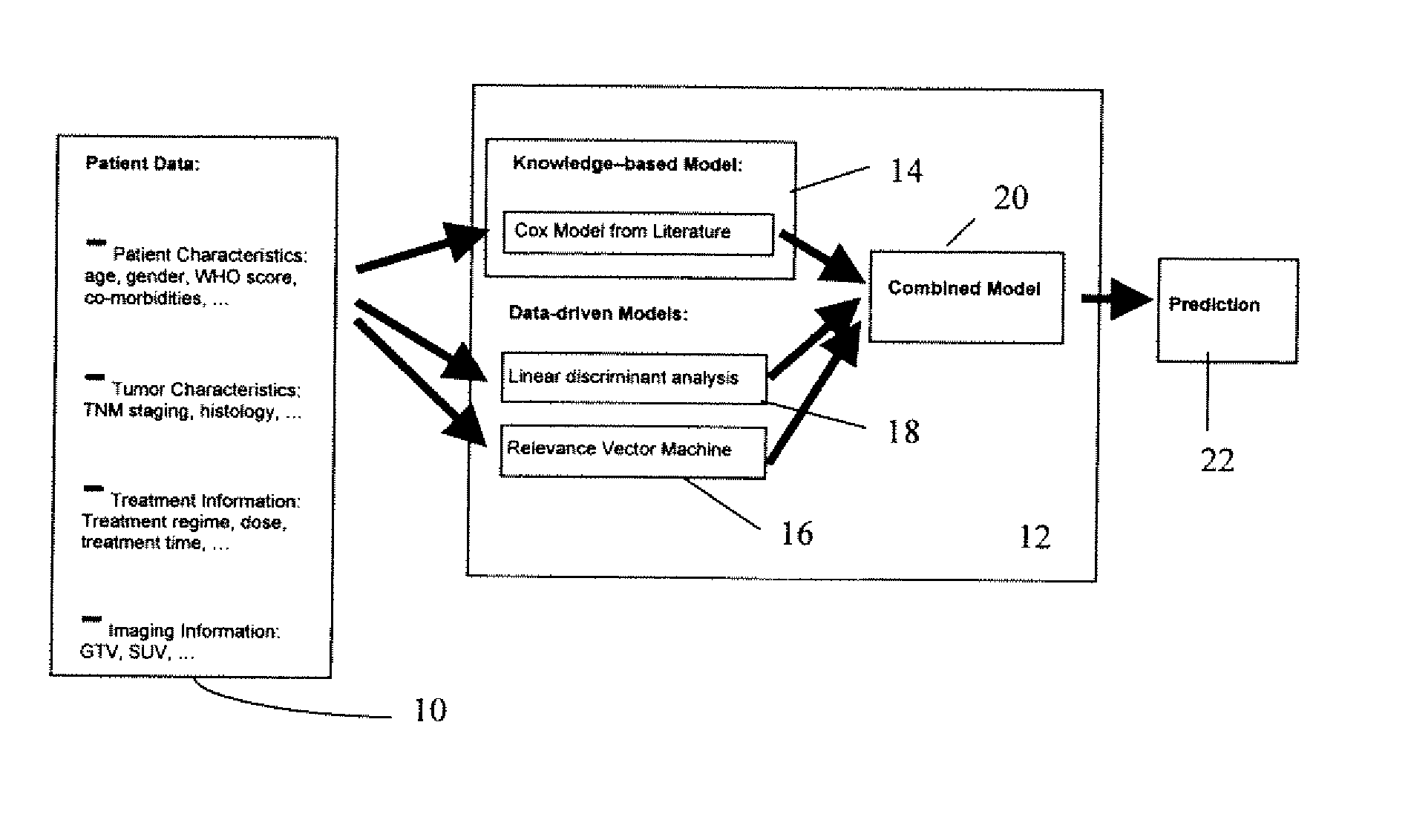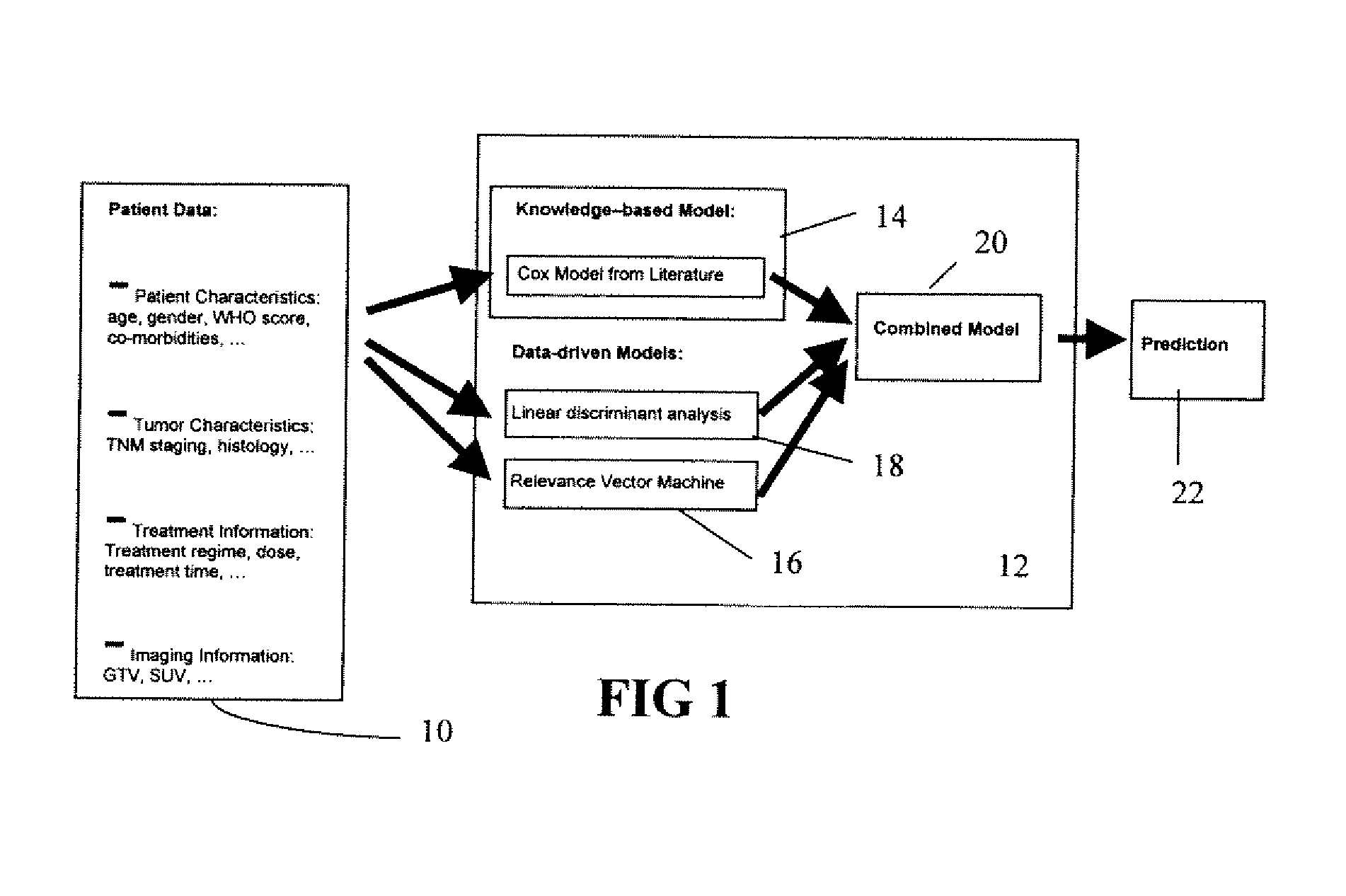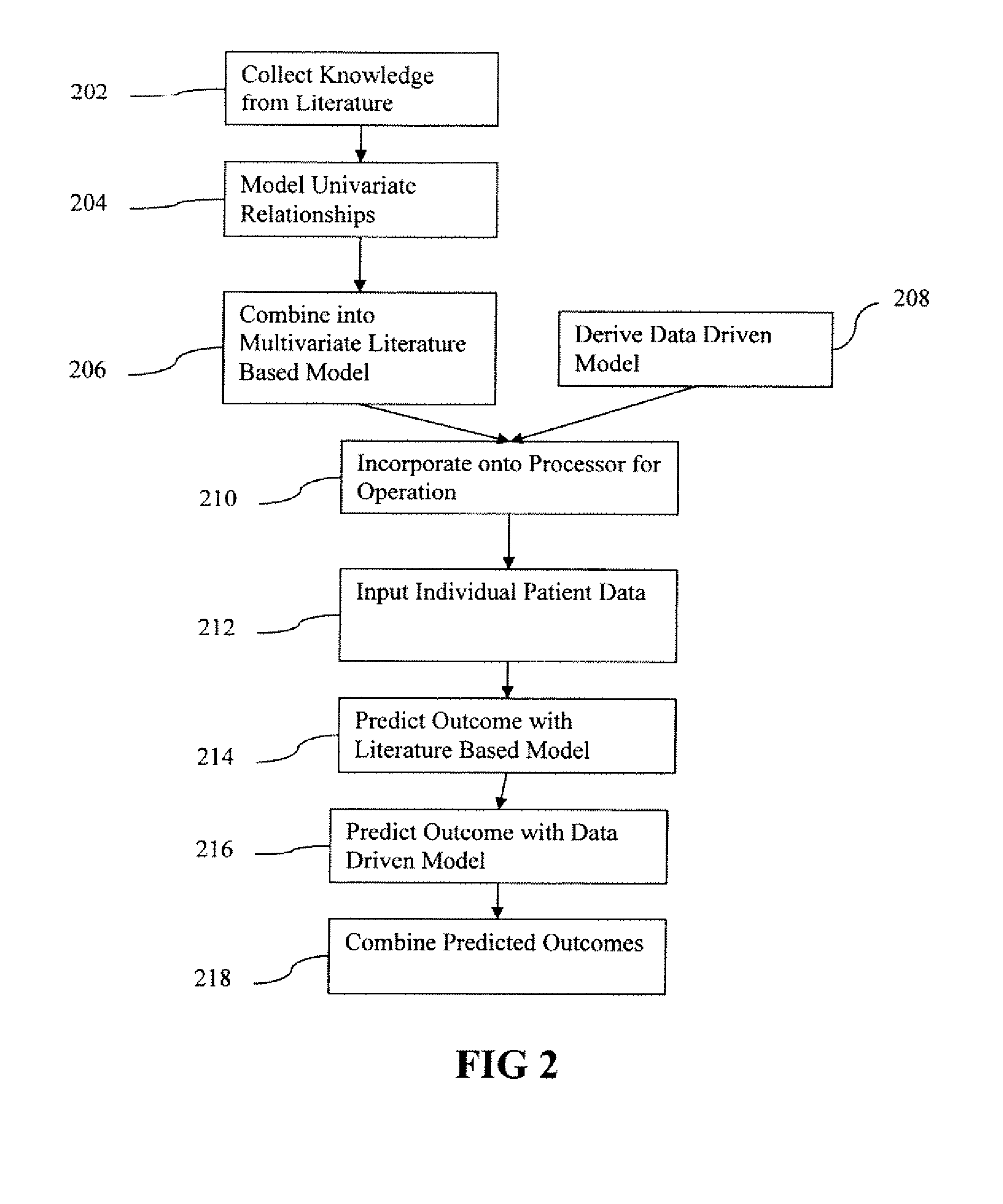Prognosis Modeling From One or More Sources of Information
a technology of information sources and forecasts, applied in instruments, digital computers, computing, etc., can solve the problems of inconvenient access to data bases or formats for forecasting, less accuracy, etc., and achieve the effect of increasing accuracy
- Summary
- Abstract
- Description
- Claims
- Application Information
AI Technical Summary
Problems solved by technology
Method used
Image
Examples
Embodiment Construction
[0015] Treatment outcome is predicted using a model derived from published literature. Published literature is an available source of reliable information for modeling even where large databases are not available.
[0016] For increased accuracy, treatment outcome is predicted from statistical models that combine several sources of data, such as literature and data driven models. For example, 2-year survival of non-small-cell lung-cancer (NSCLC) patients is predicted based on individual or patient specific information. The prediction uses knowledge base gleaned from literature and a database. By incorporating both sources of information into a combined model, consistency and accuracy of the predictions may be improved.
[0017] The modeling may be associated with a healthcare workflow. For example, patient data mining or manual input provides values to one or more prognosis models. The values are for a particular patient. The model or models generate a prognosis regarding a possible tre...
PUM
 Login to View More
Login to View More Abstract
Description
Claims
Application Information
 Login to View More
Login to View More - R&D
- Intellectual Property
- Life Sciences
- Materials
- Tech Scout
- Unparalleled Data Quality
- Higher Quality Content
- 60% Fewer Hallucinations
Browse by: Latest US Patents, China's latest patents, Technical Efficacy Thesaurus, Application Domain, Technology Topic, Popular Technical Reports.
© 2025 PatSnap. All rights reserved.Legal|Privacy policy|Modern Slavery Act Transparency Statement|Sitemap|About US| Contact US: help@patsnap.com



